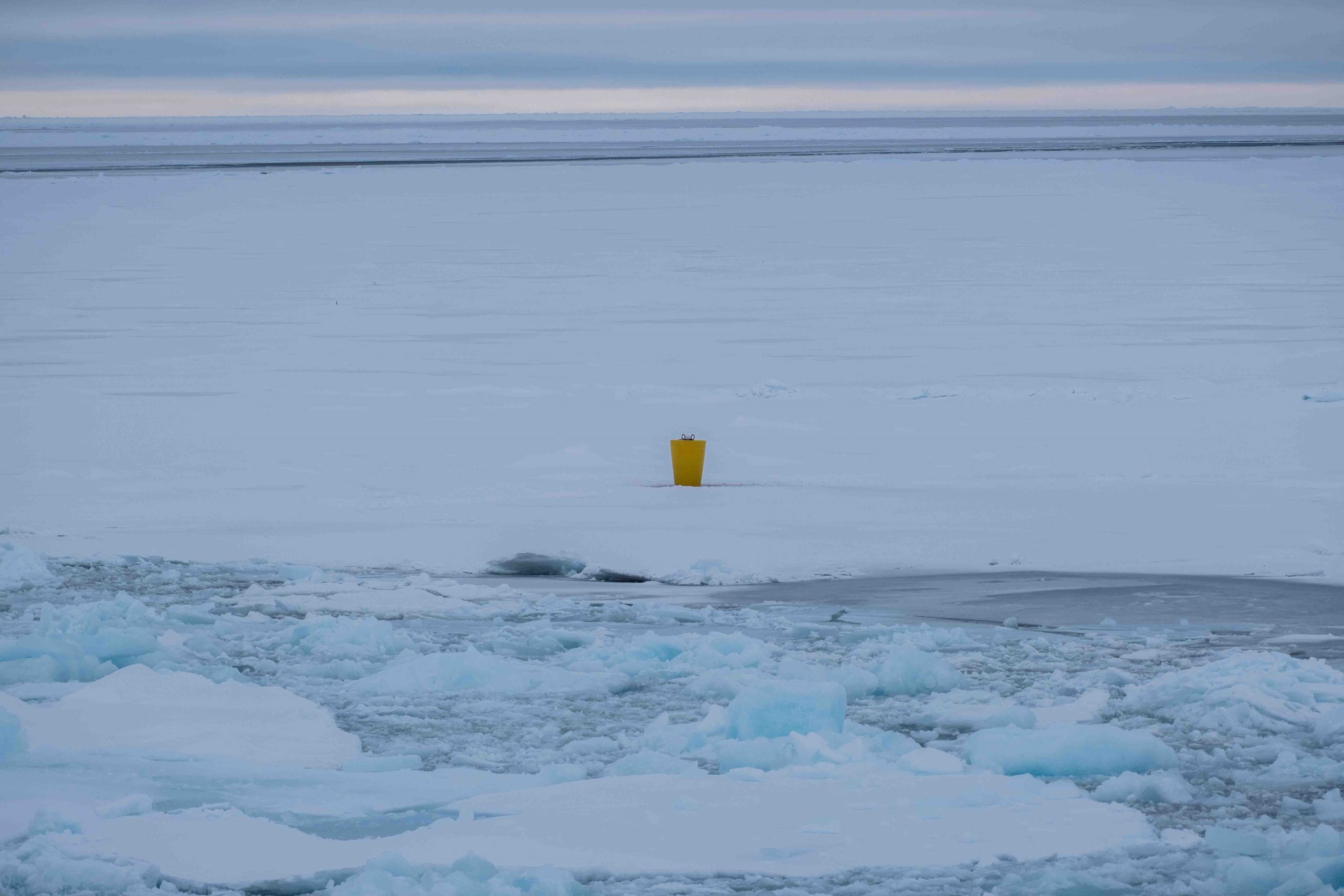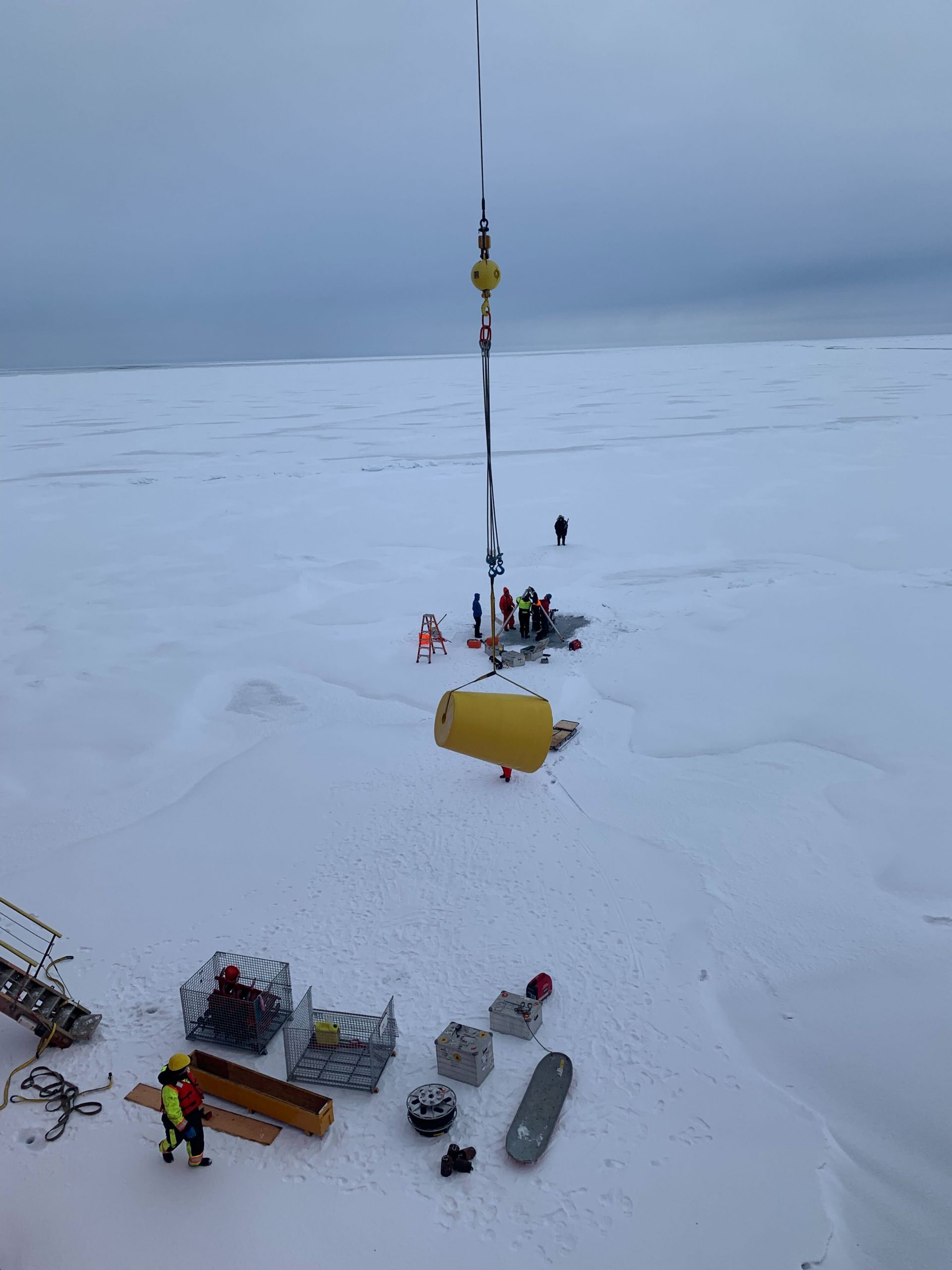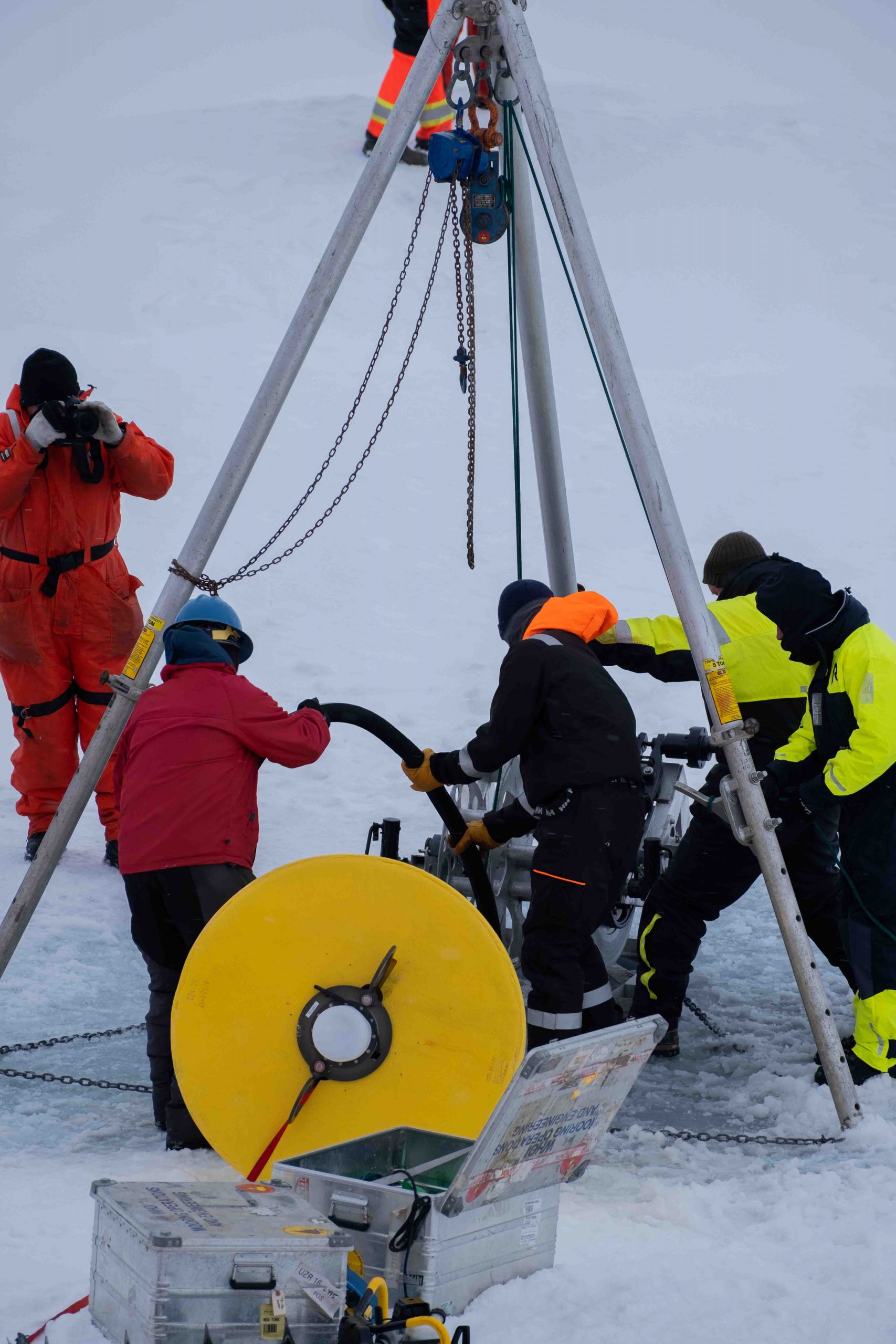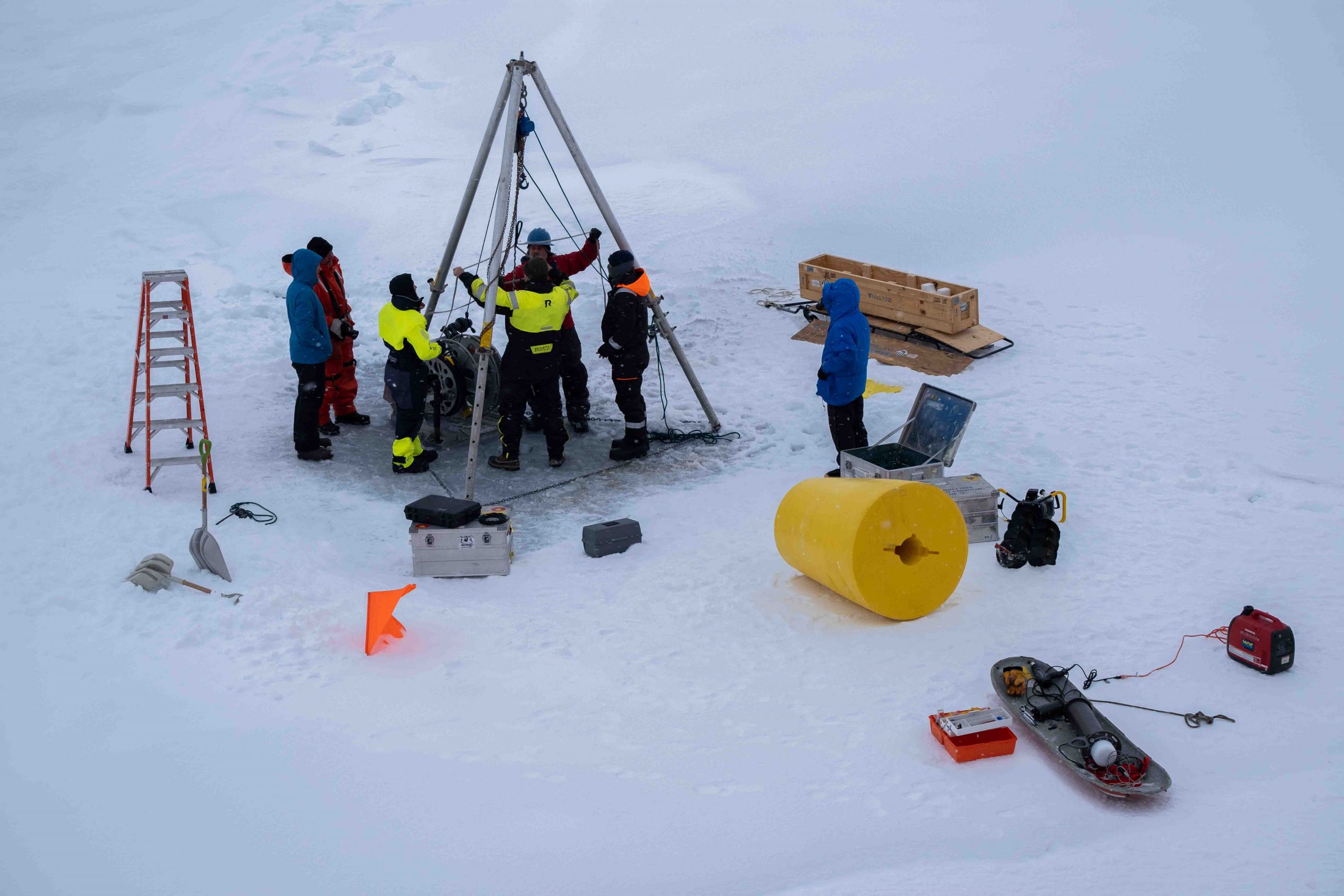Dispatch 10: We've Deployed Our First ITP!
Elizabeth Bailey
September 25, 2022
Yesterday morning, the team from WHOI (Woods Hole Oceanographic Institution) were the first people to go out onto the ice this expedition! Their role is to facilitate the deployment and recovery of many instruments that will be left out in the Beaufort Gyre to collect data year-round. When the WHOI team went onto the ice yesterday morning, they deployed the first Ice-Tethered Profiler of the cruise.
An Ice-Tethered Profiler (ITP) is an instrument that is deployed either in ice or the open ocean. It’s made up of a surface buoy, profiler, wire rope, and weight (See photo 2). ITPs float around the Arctic Ocean in a Lagrangian way, or in other words, drift wherever the ocean currents or ice floe take it. While it drifts, the ITP collects measurements of temperature, salinity, and pressure of the top 800 meters of the water column. ITPs have been deployed both in the Canadian Basin, as well as the Eurasian Basin, since 2003 – so there are two decades worth of upper ocean measurements collected by ITPs – more than 130 ITPs in total! Data collected by ITPs have helped scientists in a variety of ways, from furthering our understanding of upper ocean heat budgets to the specifics of how the upper ocean mixes. Some ITPs have additional instruments on them that measure ocean velocity, dissolved oxygen, and more.
Today, our ice station included four buoy deployments plus additional ice measurements such as cores and other measurements like ice thickness and a variety of other biological and geochemical samples. In addition to deploying the second ITP of the expedition, we also deployed a Seasonal Ice Mass Balance Buoy (SIMBB, that measures ice thickness and snow depth), an Arctic Ocean Flux Buoy (AOFB, that can tell us how much ocean heat influences the bottom of the ice), and a Tethered Ocean Profiler (TOP, a recent development in Arctic buoy systems that can measure properties in shallow regions of the Arctic Ocean). On the ITP that was deployed today, there was also a Submersible Autonomous Moored Instrument, or SAMI, on the top of the ITP wire. The other instruments deployed will be discussed in future dispatches, so stay tuned!




